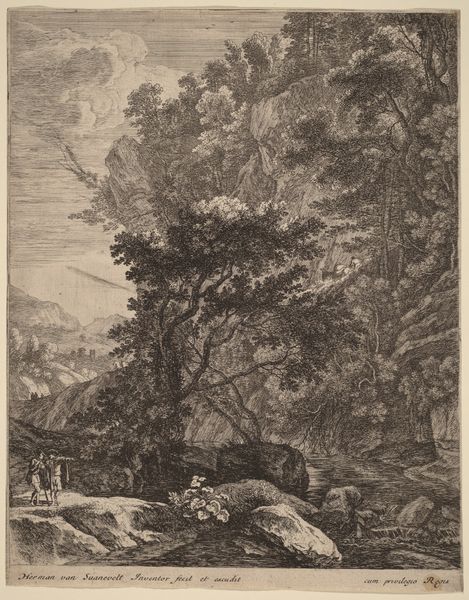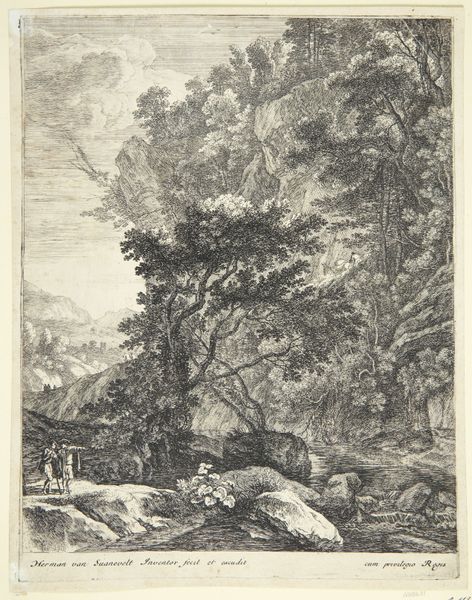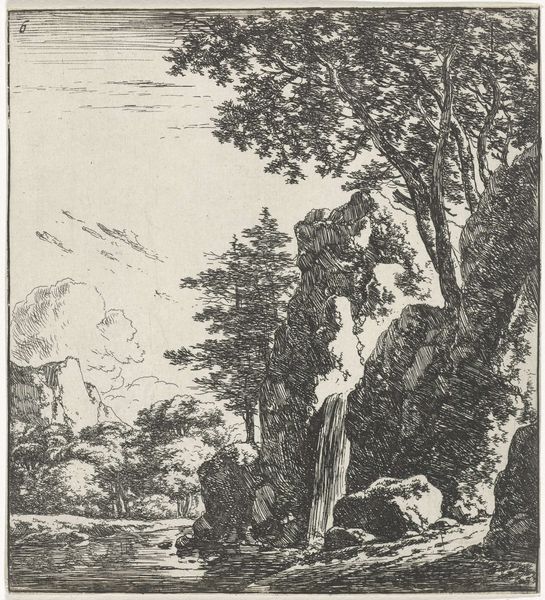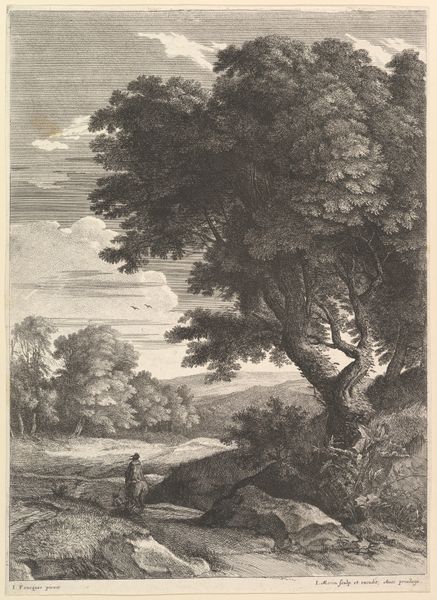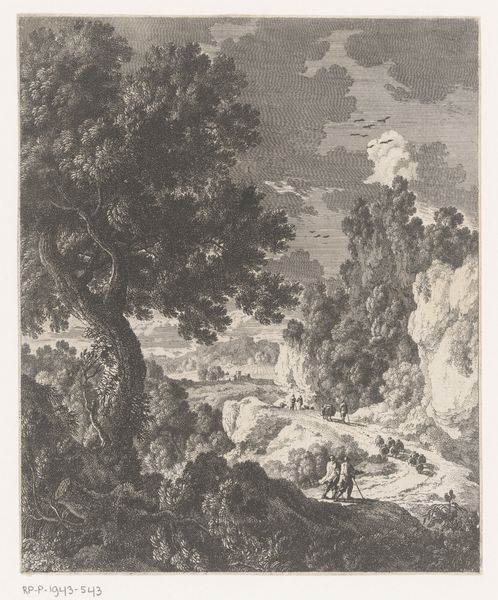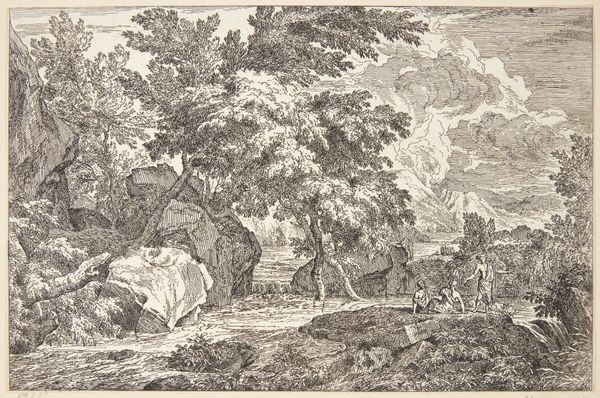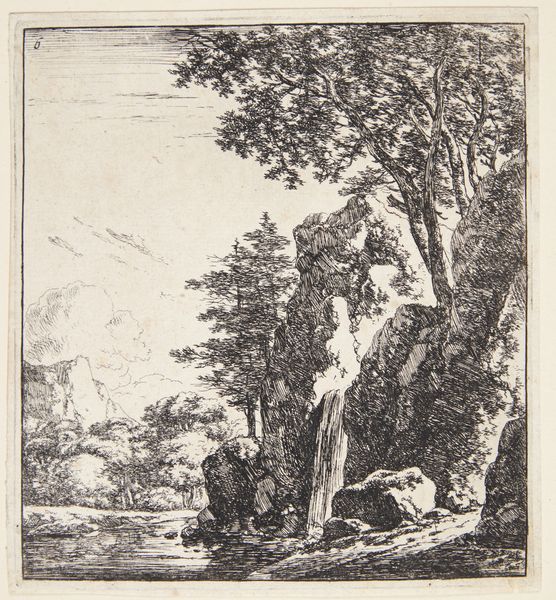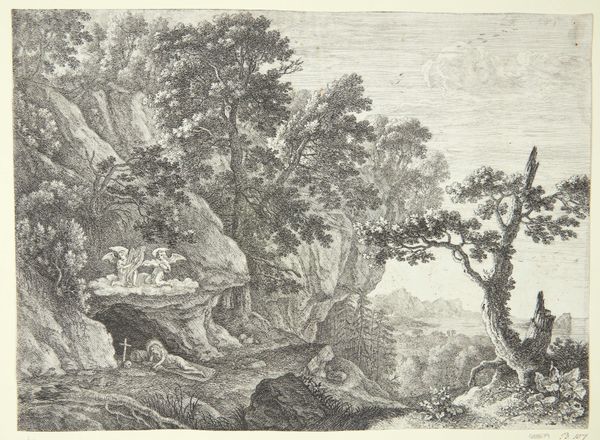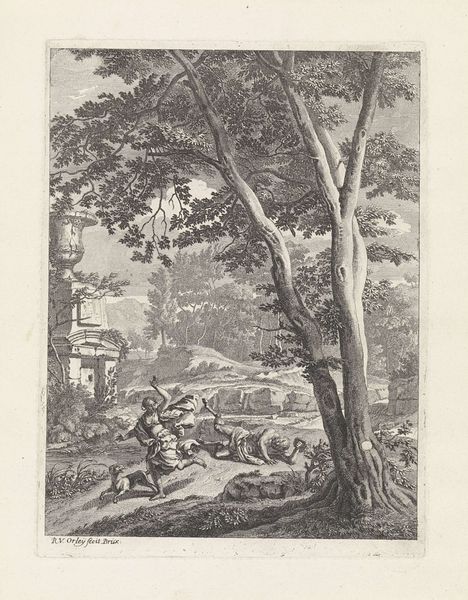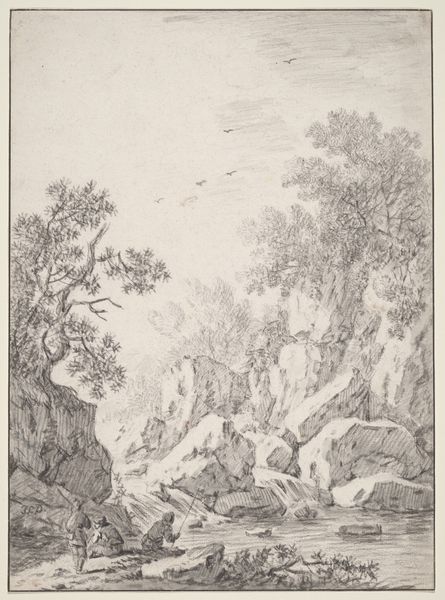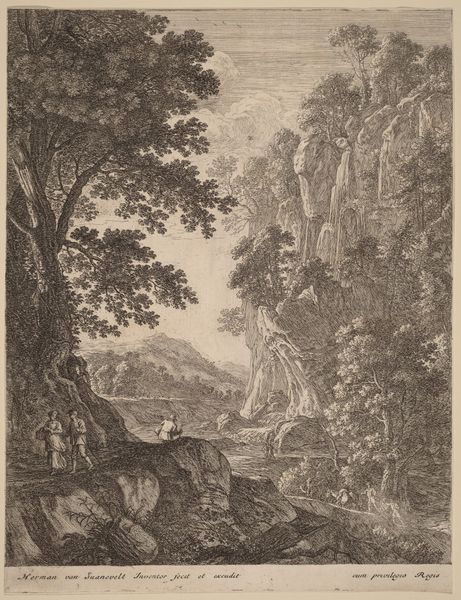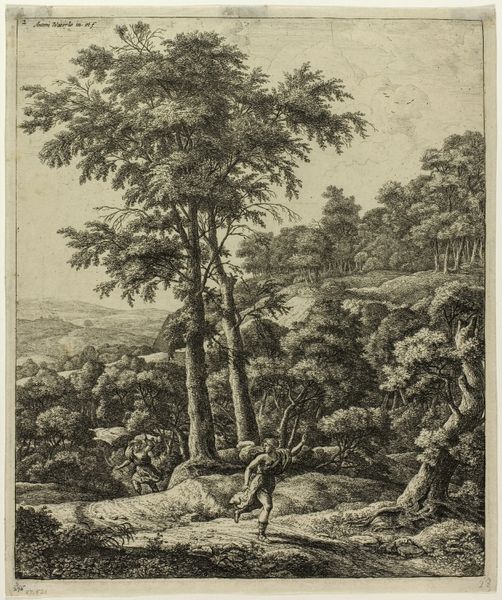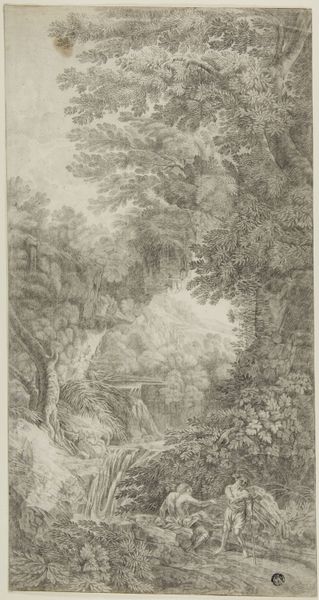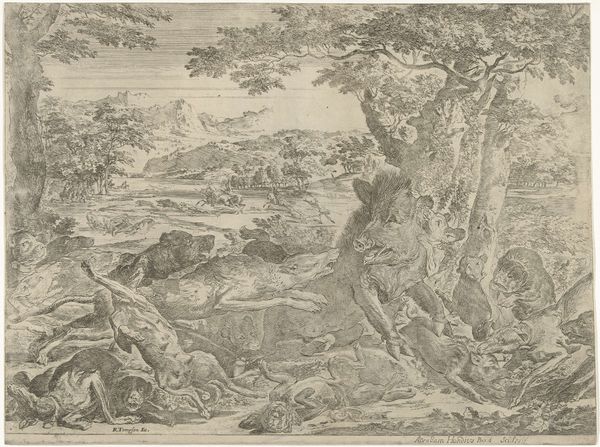
Bjerglandskab, i forgrunden to vandrere. "Bjerget" 1603 - 1655
0:00
0:00
print, etching
#
baroque
# print
#
etching
#
landscape
#
pencil drawing
Dimensions: 293 mm (height) x 238 mm (width) (bladmaal)
Curator: This etching by Herman van Swanevelt, made sometime between 1603 and 1655, is called "Mountain Landscape, with Two Walkers in the Foreground, ‘The Mountain’." What do you make of it? Editor: Well, immediately I'm struck by the almost overwhelming feeling of nature here, it’s an idealized romantic landscape that seems to swallow those small figures whole. A dramatic composition, certainly. Curator: Yes, and that is precisely the tension van Swanevelt seems to be exploring. Consider the technical skill required to produce this density of lines through etching; this was a laborious, specialized process available only to a select few. The availability of this artwork, a print, opens an entirely new conversation as it means more people would have access to view it. Editor: That's an important point. It speaks to the democratization of art, but I think it's more complicated. While the image itself might be more accessible, the reality of landscape painting—particularly idealized ones like this—often served as a form of escapism for those detached from the land. Who, exactly, had access to even buy a print like this? Curator: Of course, there is the economic component to consider. However, let's not overlook the actual creation of this print. Acid was applied to the plate to eat away at the design creating lines, which created an accessible work that still alluded to nature and encouraged viewers to marvel at the great outdoors from wherever they were. Editor: And I’d argue that such an idealized landscape served to mask the human cost often required to tame and exploit natural resources for societal “advancement”. The tiny figures could just as easily be displaced farmers as heroic travelers. This romanticizing ignores any critique of industrializing landscapes. Curator: Those tensions really open up how to engage with not just van Swanevelt’s landscape but landscape art in general. Considering labor practices within 17th-century printmaking alongside these contemporary readings provides valuable insights. Editor: Absolutely, it urges us to look past surface beauty and consider the social and historical undercurrents at play when viewing such beautiful images. I think it is essential to consider multiple interpretations.
Comments
No comments
Be the first to comment and join the conversation on the ultimate creative platform.
